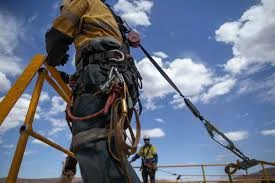Why Investing in Accredited Working at Heights Training is Crucial for Your Business
In today’s fast-paced work environment, ensuring employee safety is paramount, especially in industries that involve working at heights. Business owners must prioritize Working at Heights training to protect their workforce and comply with necessary regulations. But not all training programs are created equal. Choosing an accredited Working at Heights Course is essential for achieving the highest safety standards, legal certification, and peace of mind.
The Significance of Accreditation in Working at Heights Training
Accreditation acts as a hallmark of quality and credibility in educational programs. For Working at Heights training, this means selecting a course that is recognized and approved by reputable organizations such as the Health and Safety Authority (HSA), Health and Safety Executive (HSE), and Royal Society for the Prevention of Accidents (RoSPA). These bodies ensure that the training provided adheres to the required standards and effectively prepares employees to recognize and mitigate the dangers associated with working at heights.
Benefits of Choosing Accredited Training Programs
- Compliance with Industry Regulations: Accredited training courses are designed to meet national safety standards. This compliance not only demonstrates your commitment to safety but also protects your business from potential legal ramifications.
- Enhanced Worker Safety: The primary goal of any Working at Heights Safety Course is to equip employees with the knowledge and skills to work safely at elevated heights. This includes understanding the use of safety equipment, recognizing hazards, and knowing how to respond in emergencies.
- Legally Recognized Certification: Employees completing accredited Working at Heights Certification receive a credential that is often a legal requirement for working in certain industries. This certification proves that they have undergone training that meets established safety standards.
- Reduction in Workplace Incidents: Investing in certified training drastically reduces the risks of accidents. Businesses that prioritize proper training often see lower injury rates, leading to fewer costly claims and lost work hours.
- Better Return on Investment: Though accredited courses may require a higher upfront investment, the long-term savings from reduced accidents and enhanced productivity far outweigh the initial costs.
Understanding the Risks of Non-Accredited Training
Opting for non-accredited training programs can present significant risks to both employees and employers. Here’s why choosing an unapproved provider can be detrimental:
- Lack of Standardization: Non-accredited courses often lack a standardized curriculum, meaning that crucial safety information and practical skills may not be adequately covered.
- Increased Liability: In the event of an accident, an employer may face increased liability if employees trained through non-accredited courses are involved, as it may be perceived that the employer did not adequately ensure safety standards.
- Legal Consequences: Without proper accreditation, businesses risk violating safety regulations, potentially resulting in fines or other legal repercussions.
Examples of Accredited Training Providers
Many organizations now offer premium Working at Heights Course Online options. These courses are compliant with regulations and provide the flexibility of online learning.
Some of the well-regarded providers include:
- Accredited trainers endorsed by the HSA
- Courses certified by RoSPA
- HSE-accredited safety programs
Real-World Case Studies
Businesses that invest in accredited Working at Heights Certification Ireland have reported transformative results:
- A construction firm in Dublin: After implementing a RoSPA-accredited training program, they saw a 50% reduction in fall-related accidents within a year.
- A maintenance company in Cork: Their switch to accredited training not only enhanced compliance but also improved overall employee morale.
Conclusion
Choosing an accredited Working at Heights Course is a smart investment in your employees’ safety and your business's compliance standing. By partnering with reputable training providers—like those recognized by the HSA or RoSPA—you can ensure that your workforce is well-equipped to handle the challenges of working at heights.
For more information on accredited courses, visit Ireland Safety Training or contact us at [email protected].



 349,500 Offered Certificates
349,500 Offered Certificates
 24/7 Online Training
24/7 Online Training
 Money Back Guarantee
Money Back Guarantee
 Fully Accredited Courses
Fully Accredited Courses
